Il Sodoma (1477 – 1549)
Get a II Sodoma Certificate of Authenticity for your painting (COA) for your II Sodoma drawing.
For all your II Sodoma artworks you need a Certificate of Authenticity (COA) in order to sell, to insure or to donate for a tax deduction.
Getting a II Sodoma Certificate of Authenticity (COA) is easy. Just send us photos and dimensions and tell us what you know about the origin or history of your II Sodoma painting or drawing.
If you want to sell your II Sodoma painting or drawing use our selling services. We offer II Sodoma selling help, selling advice, private treaty sales and full brokerage.
We have been authenticating II Sodoma and issuing certificates of authenticity since 2002. We are recognized II Sodoma experts and II Sodoma certified appraisers. We issue COAs and appraisals for all II Sodoma artworks.
Our II Sodoma paintings and drawings authentications are accepted and respected worldwide.
Each COA is backed by in-depth research and analysis authentication reports.
The II Sodoma certificates of authenticity we issue are based on solid, reliable and fully referenced art investigations, authentication research, analytical work and forensic studies.
We are available to examine your II Sodoma painting or drawing anywhere in the world.
You will generally receive your certificates of authenticity and authentication report within two weeks. Some complicated cases with difficult to research II Sodoma paintings or drawings take longer.
Our clients include II Sodoma collectors, investors, tax authorities, insurance adjusters, appraisers, valuers, auctioneers, Federal agencies and many law firms.
We perform Il Sodoma art authentication, appraisal, certificates of authenticity (COA), analysis, research, scientific tests , full art authentications. We will help you sell your Il Sodoma or we will sell it for you.
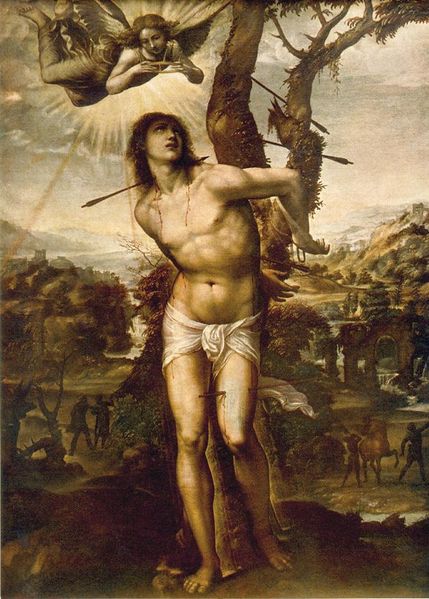
Il Sodoma was the name given to the Italian Mannerist painter Giovanni Antonio Bazzi. Il Sodoma painted in a manner that superimposed the High Renaissance style of early 16th century Rome onto the traditions of the provincial Sienese School. Il Sodoma spent the bulk of his professional life in Siena and some time in Rome.
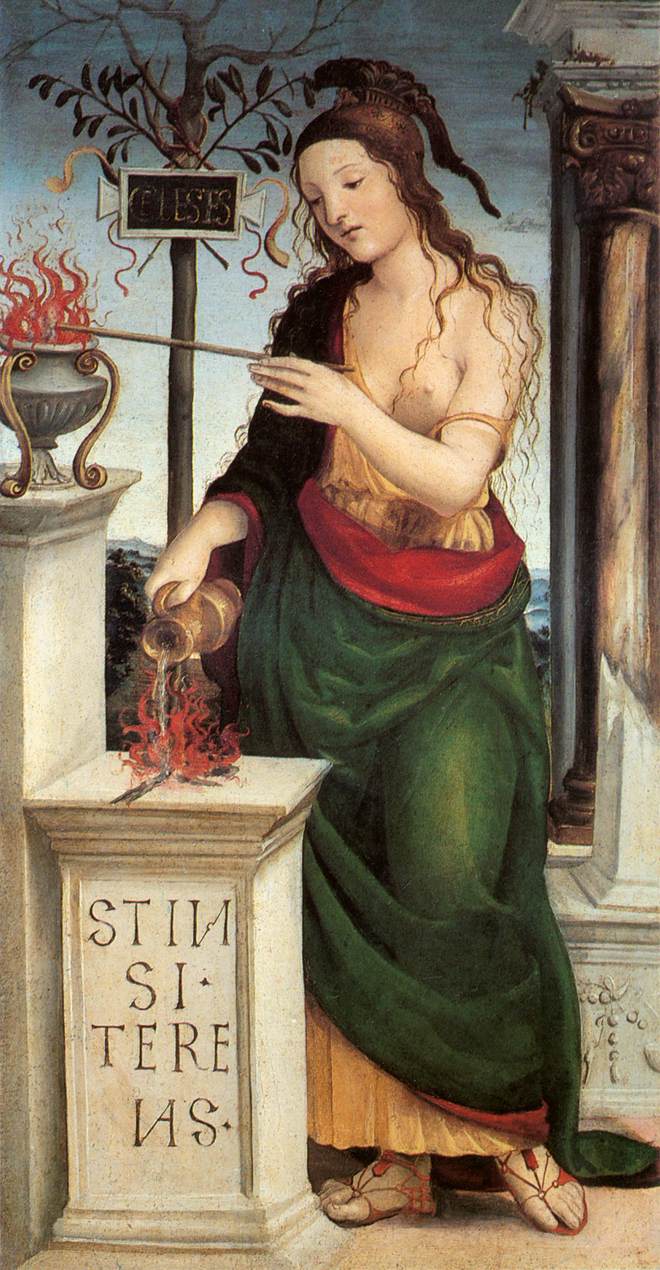
Il Sodoma was of the family de Bazis and born at Vercelli in Piedmont in 1477. His first master was the “archaic” Martino Spanzotti, and he also appears to have been a student of the painter Giovenone. After acquiring the strong coloring and other distinctive stylistic features of the Lombard school and somehow absorbing the superficial mannerisms of Leonardo (Freedberg 1993:117), he traveled to Siena before 1503, perhaps at the behest of agents of the Spannocchi family. There, he began with fresco cycles for Olivetan monks and a series of small Ovidian ceiling panels and a frieze depicting the career of Julius Caesar for Sigismondo Chigi at Palazzo Chigi.
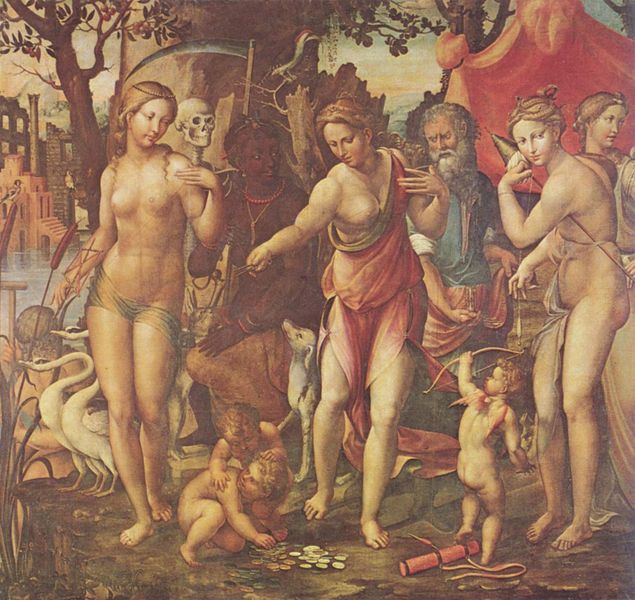
Along with Pinturicchio, Il Sodoma was one of the first to practice in Siena the style of the High Renaissance. His first important works were seventeen frescoes in the Benedictine Monastery of Monte Oliveto Maggiore, on the road from Siena to Rome, illustrating the life of St. Benedict in continuation of the series that Luca Signorelli had begun in 1498. Gaining fluency in the prevailing popular style of Pinturicchio, Sodoma completed the set in 1502 and included a self-portrait with badgers.
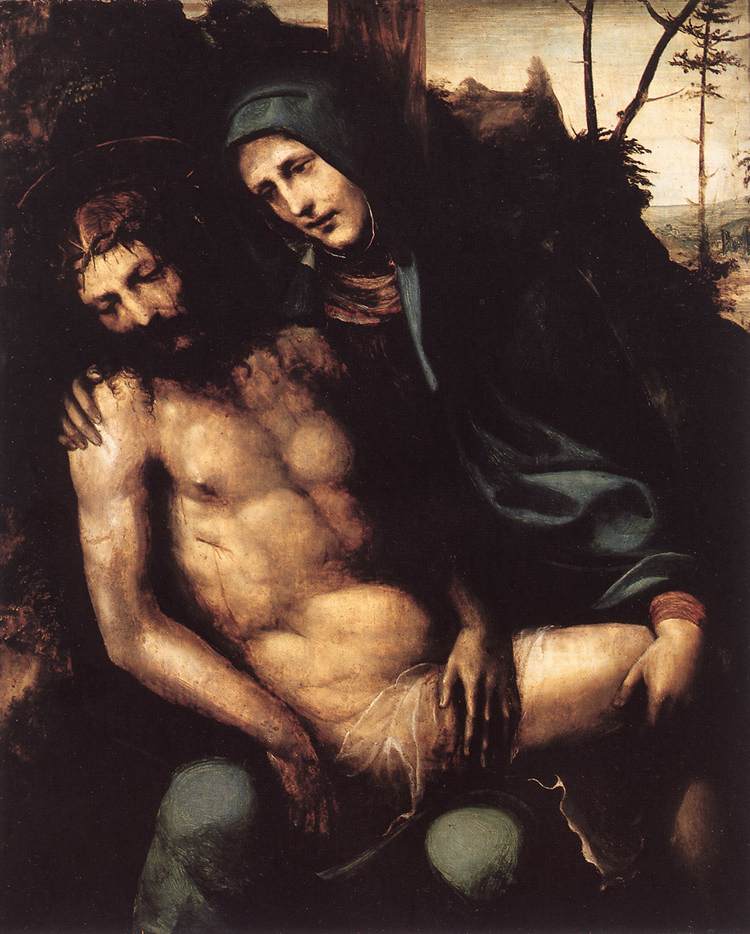
Sodoma was invited to Rome in 1508 by the celebrated Sienese merchant Agostino Chigi and was employed there by Pope Julius II in the Stanza della Segnatura in the Vatican. He executed two great compositions and various ornaments and grotesques in vaulted ceilings divided in feigned compartments in the antique manner that Pinturrichio had recently revived, working at the same time as Raphael. Vasari’s rhetorical story that Sodoma’s larger works did not satisfy the pope, who engaged Raphael to substitute a program of Justice, Poetry, and Theology, is not borne out by the documents.
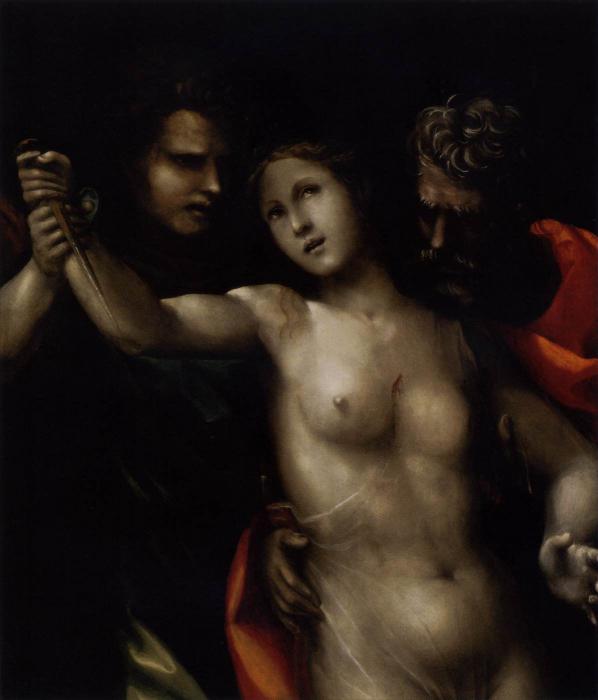
Before October 1510, he was in Siena, where he painted the exterior of Palazzo Chigi in monochrome chiaroscuro with scenes from the Bible and from antiquity, the first such work seen in Siena (Bartalini 2001:553). His painting at this time began to show distinct Florentine influences, especially of Fra Bartolommeo.
Called again to Rome by Chigi, in the Villa Chigi (now the Farnesina), working alongside Baldassare Peruzzi, Sodoma painted subjects from the life of Alexander the Great: Alexander in the Tent of Darius and the Nuptials of the Conqueror with Roxana, which some people consider his masterpiece. When Leo X became pope (1513), Sodoma presented him with a picture of the Death of Lucretia (or of Cleopatra, according to some accounts). Leo gave him a large sum of money as a reward and created a cavaliere for him.
Sodoma returned to Siena and, at a later date, sought work in Pisa, Volterra, and Lucca. From Lucca, he returned to Siena not long before his death on 14 February 1549 (older narratives say 1554). He had supposedly squandered his property and is said, without documentary support, to have died in penury in the great hospital of Siena.
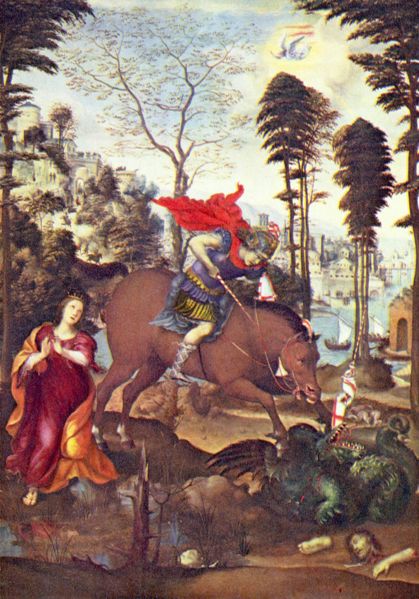
In his youth, Sodoma had married, but he and his wife soon separated. A daughter married Bartolomeo Neroni, called also Riccio Sanese or Maestro Riccio, one of Sodoma’s principal pupils. It is said that Sodoma jeered at Giorgio Vasari’s Lives of the Artists, and as a result, Vasari repaid him by presenting a negative account of Sodoma’s morals and demeanor and withheld praise of his work. According to Vasari, the name by which Sodoma was known was “Il Mattaccio” (the Madcap, the Maniac), this epithet having been bestowed upon him by the monks of Monte Oliveto. He dressed gaudily, like a mountebank, and his house was a Noah’s ark, owing to the strange miscellany of animals he kept there. He was a cracker of jokes, fond of music, and he sang poems he composed on indecorous subjects.
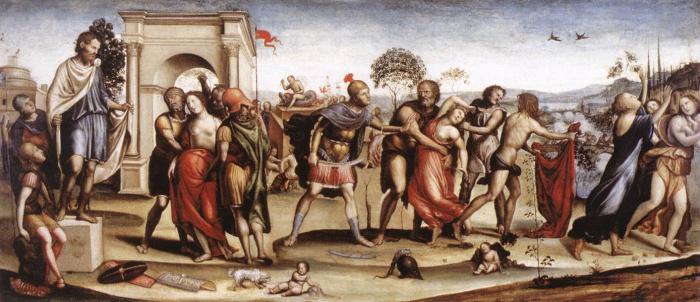
Vasari alleges that Sodoma was always a negligent artist. His early success in Siena, where he painted many portraits being partly due to lack of competition, was a judgment in which Sidney Freedberg concurs. Vasari asserts that as he aged, he became too “lazy” to make cartoons for his frescoes but daubed them straight onto the wall. Vasari nevertheless admits that Sodoma produced some works of very fine quality and that during his lifetime his reputation was high.
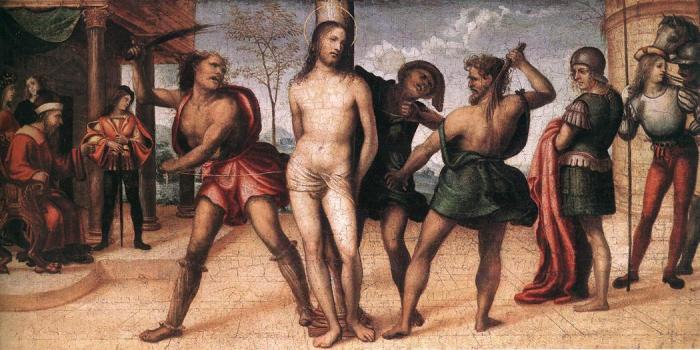
Some of his works, including the Holy Family now in the Pinacoteca, have been mistaken for works of Leonardo da Vinci. His easel pictures are rare, and there are two in the National Gallery, London. Some critics see in Sodoma’s Madonna in the Brera the direct influence of this master. Modern criticism follows Morelli in supposing that Raphael painted Sodoma’s portrait in The School of Athens, while a drawing at Christ Church is supposed to be a portrait of Raphael by Sodoma.
Among his masterpieces are the frescoes, completed in 1526, in the Chapel of St. Catherine of Siena painted for the church of San Domenico (Siena), depicting the saint in ecstasy, fainting as she receives the Eucharist from an angel. In the oratory of S. Bernardino, there are scenes from the history of the Virgin, painted in conjunction with Pacchia and Beccafumi (1536-1538) — the Visitation and the Assumption. In S. Francesco, there are the Deposition from the Cross (1513) and Christ Scourged. Many critics regard one or the other of these paintings as Sodoma’s masterpiece. In the choir of the Cathedral at Pisa, there is the Sacrifice of Abraham, and in the Uffizi Gallery of Florence, there is a St. Sebastian.
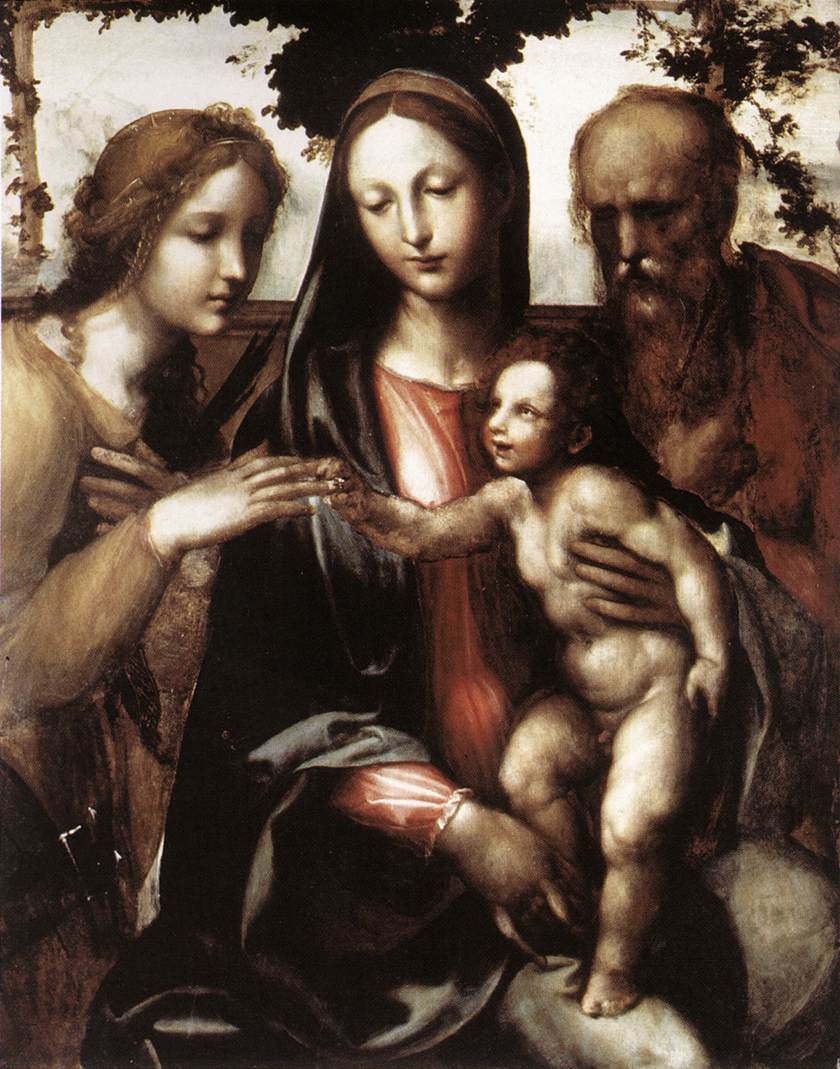
Still wondering about an Italian painting in your family collection? Contact us…it could be by Il Sodoma.
